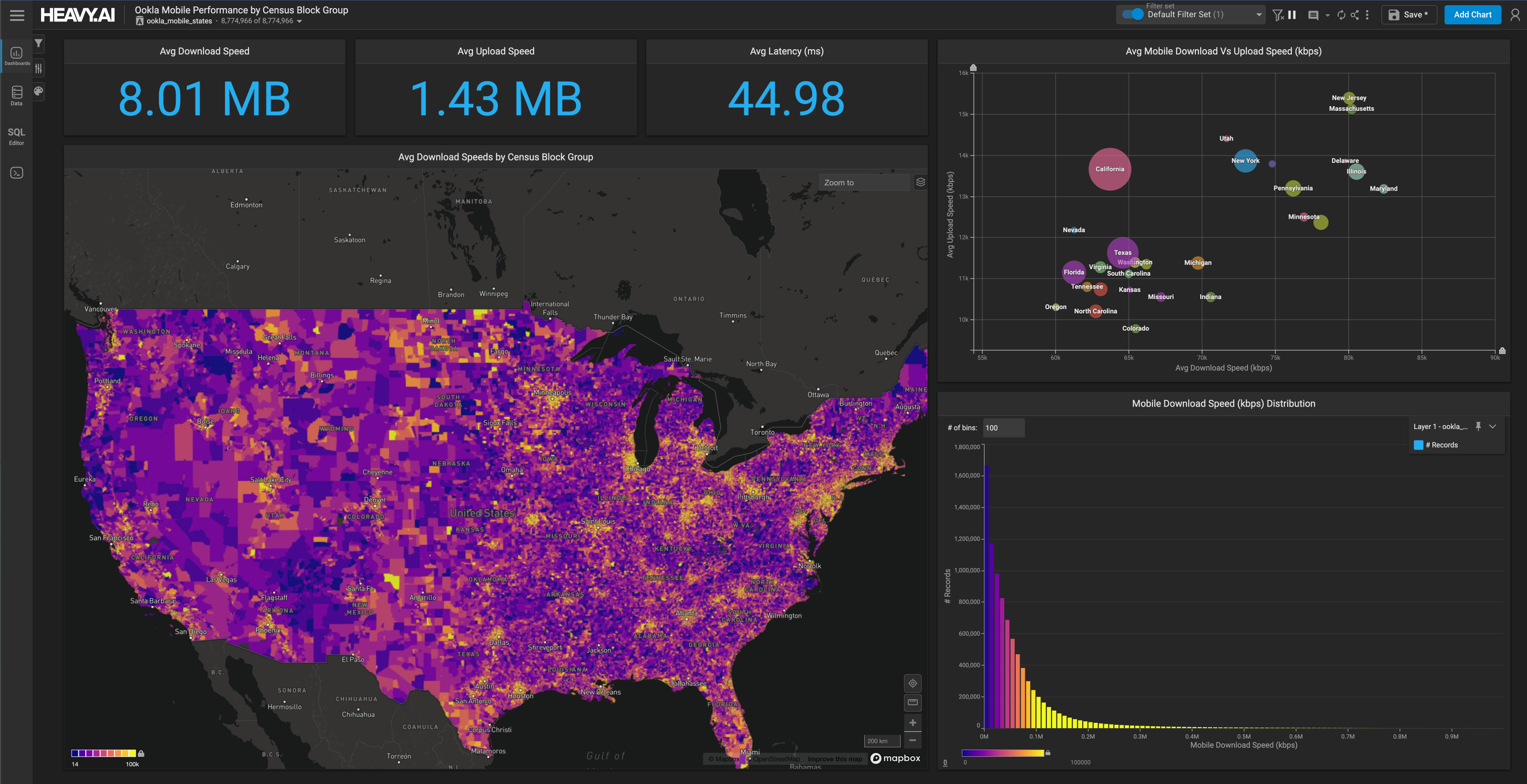
Ready, Set, Grow: The Year of 5G in Telecommunications
Try HeavyIQ Conversational Analytics on 400 million tweets
Download HEAVY.AI Free, a full-featured version available for use at no cost.
GET FREE LICENSEAccording to Deloitte, 2020 is “the year of 5G” in the telecom sector. Forward-thinking telecoms have been preparing, identifying opportunities, and assessing infrastructure needs to get ready for transformative change. 5G infrastructure revenue is now poised for explosive growth; Gartner predicts nearly 90% growth from 2019 revenue of $2.2 billion to reach $4.2 billion this year.
Even as the industry prepares for unprecedented growth, major challenges remain. Telecoms are augmenting the huge, expensive macrocell towers that have supported previous network generations with small cells (femto and pico cells) on a massive scale to set up a core network architecture that supports 5G. Also needed are in-building solutions like distributed antenna systems.
Significant investments have already been made, but telecoms will have to do much more to deliver the coverage, higher frequency capabilities, and enormous data requirements necessary to support 5G. It will require an infrastructure that is software defined. And that requires insight to make effective decisions about where to make investments and maximize performance.
As NVIDIA CEO Jensen Huang noted in a recent Mobile World Congress keynote address, making telecommunications software defined is an “extraordinarily hard problem.” Overcoming the challenge will require the ability to analyze huge data sets quickly to find insight. Data sources include radio frequency modeling, coverage analysis, geographic data, drive testing, and mobile performance data.

Huang demonstrated the scale of the data involved with an on-screen visualization of 2.7 billion rows of crowd-sourced mobile phone data across the U.S., running on the OmniSci GPU-accelerated database and analytics platform (data courtesy of Tutela). The ability to visualize such a massive dataset provides granular insight on user patterns in a geographical and temporal context.

This ability to analyze and visualize complex data records at a massive scale is critical for telecoms to optimize capital planning. With OmniSci’s accelerated analytics platform, data scientists can leverage the parallel processing power of GPUs (or untapped CPU power) to process and render incredibly high volumes of data in just milliseconds.
What does that mean for telecoms? It’s an opportunity for data scientists and analysts to layer existing network datasets with the modeling and coverage analysis they need to create efficient 5G networks and continuously optimize performance. It provides an opportunity to reduce interference between 5G network towers by running millions of complex calculations at speed. Essentially overcoming the analytic barriers of the past.
Additionally, an accelerated analytics platform enables data scientists to layer on geospatial data, generate heatmaps, choropleths and conduct spatio-temporal analysis and generate real-time, granular insights related to network speed and coverage. OmniSci’s in-memory data acceleration provides telecoms with the ability to speed up machine-learning algorithms and generate predictive analytics to identify optimal 5G antenna placement — and efficiently meet consumer demand and optimize customer retention.
As Huang noted in his keynote address, carrier data needs don’t go away when the workday ends; they do “move and evolve through place and time.” To avoid overprovisioning, carriers must be able to evolve and reconfigure to match demand. OmniSci’s accelerated analytics platform can transform data science within the telecom industry, giving telecom enterprises the ability to shift to meet demand in real time. With that capability, telecoms will be ready for 2020: the year of 5G.
Want to get a taste of what accelerated analytics is like? Try our public demo running a massive telecommunication dataset.




